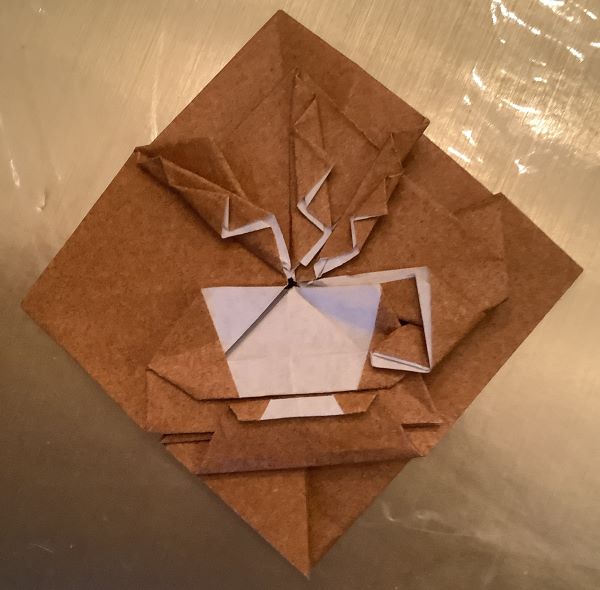
Coffee, designed by Wang Shuo
A lot of origami paper is colored on the front, and white on the back, so you can make patterns by carefully exposing the front and back. I’m vaguely aware of a subdiscipline within origami all about making shapes just with color change. But I have very little experience with it, and don’t understand any of the design principles! As far as I’m concerned, it’s basically magic. Perhaps one day I’ll give a shot at designing something like this.
The instructions for this model are available on CFC.
I feel compelled to mention that I am not a coffee drinker. I drink tea.

John Montroll had a book called Origami Inside-Out, which was all figures that made use of both sides of a sheet of paper, from a blue jay, to a tiger, to the most complicated design in the book: a chessboard table, with all 64 squares. Yes, I’ve actually managed to fold it.
(I don’t have the book with me at the moment, but I seem to recall the final length of the sides of the tabletop was 2/9 the length of the sides of the original sheet of paper. Yes, the sheet had to be divided into equal ninths early in the process.)
I’ve heard of checkerboard folding from Erik Demaine’s lectures, and there’s a paper specifically on that subject (I have not read it). Apparently the most efficient model uses paper that goes as n^2 with the size of the checkerboard.